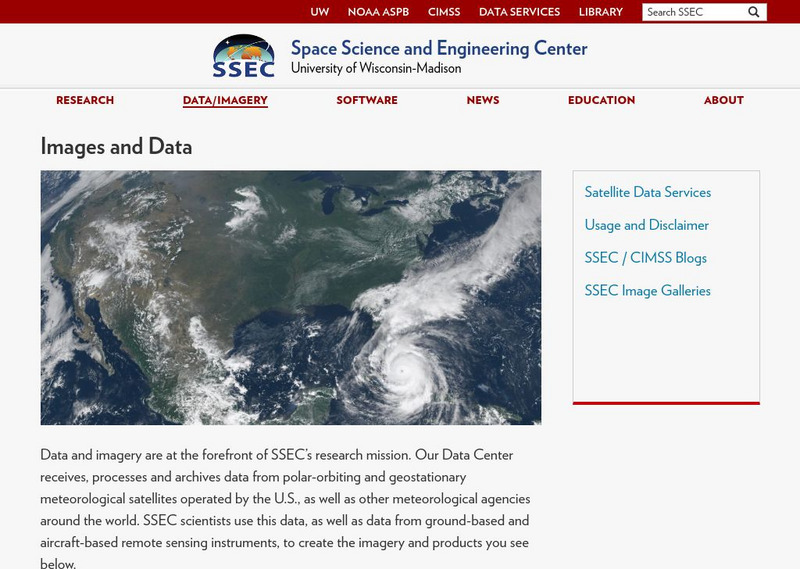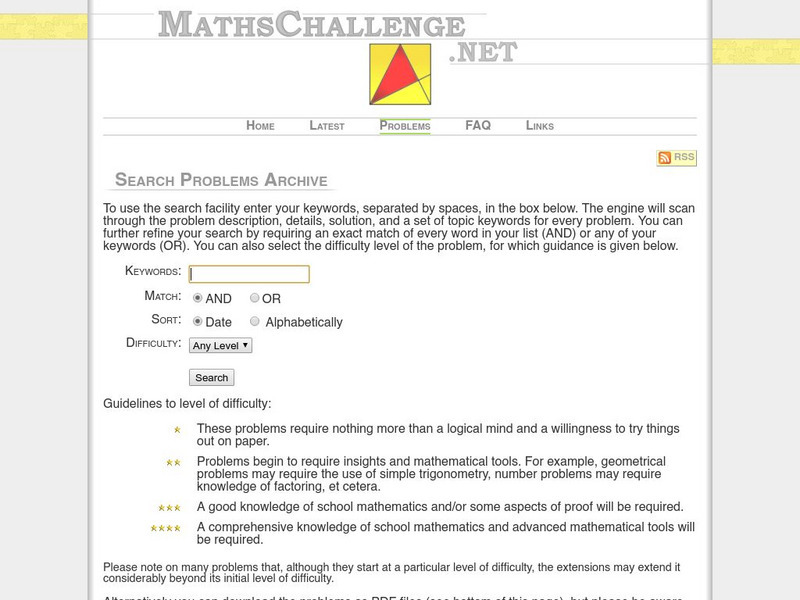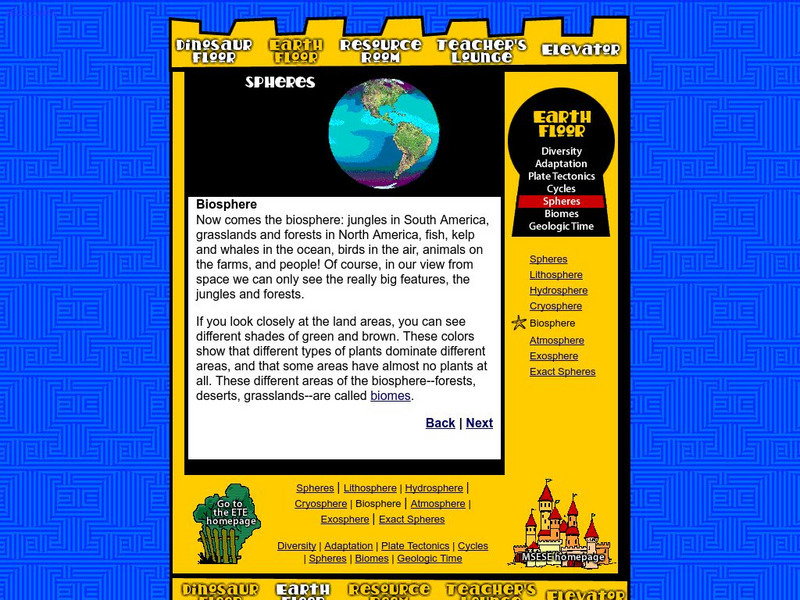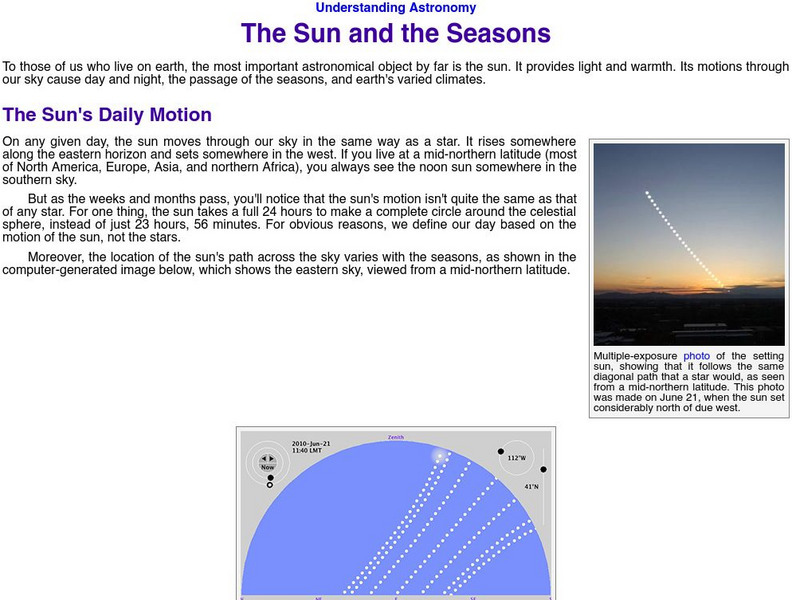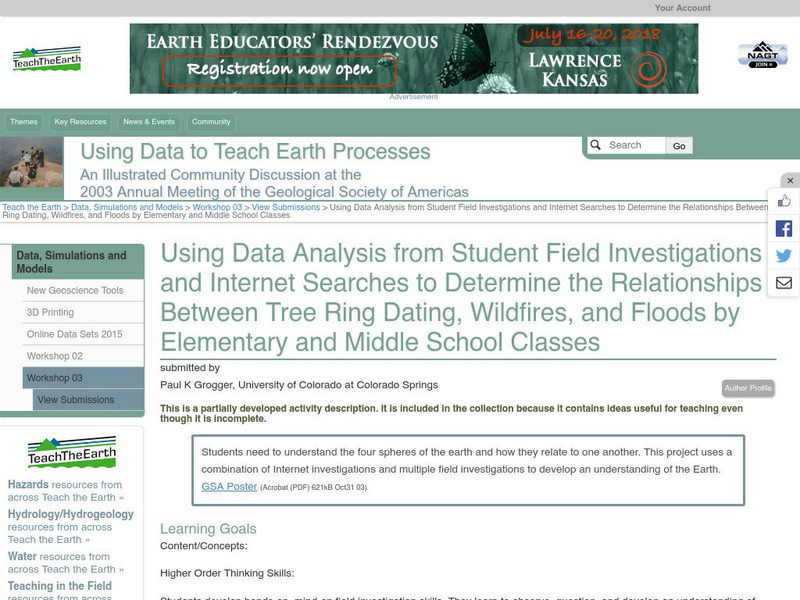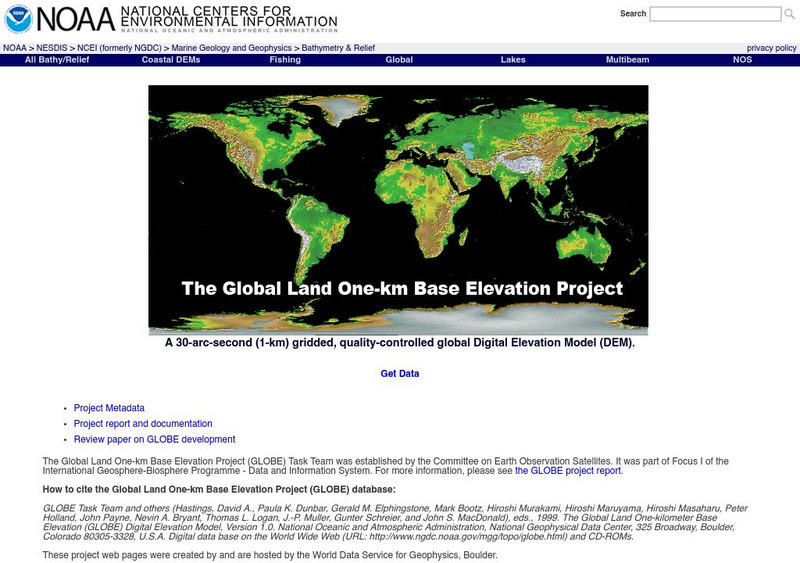Hi, what do you want to do?
American Geosciences Institute
American Geosciences Institute: Earth Science Week: Geoscience and Petroleum Careers
In this activity, students think about how various real-world careers relate to personal interests and Earth's systems- the geosphere, hydrosphere, atmosphere, and biosphere.
Other
Interactions Between the Atmosphere & Hydrosphere [Pdf]
A discussion of the interactions between the four spheres of Earth and how they affect weather and climate. The slideshow is divided into two parts. The first deals with interactions between the atmosphere and the hydrosphere and the...
Other
Institute of Ecotechnics: Bio Sphere 2
Learn about the Biosphere 2 project and the history of Biospherics.
Encyclopedia of Earth
Encyclopedia of Earth: Physical Geography
Get a general grasp on the four spheres, five sub-fields, and two scales of physical geography.
University of Wisconsin
Ssec: Real Time Imagery and Data: Satellite Images of the Earth
Check out real-time satellite photos of the earth to study weather patterns.
Mocomi & Anibrain Digital Technologies
Mocomi: Major Domains of the Earth Biosphere
Learn about the biosphere, when it originated, how life sustains itself, and what processes occur.
Other
Earth History: The Paleomap Project
The Paleomap Project illustrates the plate tectonic development of the ocean basins and continents, as well as the changing distribution of land and sea during the past 1,100 million years.
Maths Challenge
Maths challenge.net: Curvature of the Earth
Distance problem using a spherical radius and height.
Center for Educational Technologies
Nasa: Classroom of the Future: Spheres: Biosphere
Use this site to learn about the different areas of the biosphere, known as biomes.
Alabama Learning Exchange
Alex: Researching the Oceans of the Earth
This unit is a result of collaboration between the librarian and the 5th grade Science teacher. The Ocean Unit developed by the librarian is hands-on research in various areas of the library utilizing print, software and Internet access....
Science Education Resource Center at Carleton College
Serc: Lab 1: Think Globally: Act Locally
A lab experiment in a series of experiments that explores Earth Science Systems. This lab introduces students to the parts of the Earth system: the atmosphere, hydrosphere, biosphere, and pedosphere. As the students learn about the...
Other
Weber State University: The Sun and the Seasons
To those of us who live on earth, the most important astronomical object by far is the sun. This article explains how the motion of the sun through our sky cause day and night, the passage of the seasons, and earth's varied climates.
Science Education Resource Center at Carleton College
Serc: Relationships Between Tree Ring Dating, Wildfires, and Floods
In this lesson plan students will understand the four spheres of the earth and how they relate to one another. This project uses a combination of Internet investigations and multiple field investigations to develop an understanding of...
Scholastic
Scholastic: Study Jams! Science: Lithosphere, Hydrosphere, and Atmosphere
A slideshow and a short multiple-choice quiz on the rock surface of the Earth, its water, and the gas layers that surround it.
Ministry of Education and Universities of the Region of Murcia (Spain)
Ministerio De Educacion Y Ciencia: El Globo Terraqueo
In Spanish. What size and shape is the Earth? What abstract body is closer? Gain this knowledge through this interactive activity. A 31 question quiz is provided at the end.
University of Virginia
University of Virginia: How the Greeks Used Geometry to Understand the Stars
An article explaining how the Greeks were able to use their science and mathematics to predict where astronomical objects such as the Planets could be found in the nighttime sky even though their underlying premise was that the earth did...
Center for Educational Technologies
Wheeling Jesuit University: How Are Things Divided Among Earth's Four Spheres?
See if you can classify various objects in the categories of land, water, air or living thing. This activity is interactive and you will receive a score for your performance.
Digital History
Digital History: The Space Race
In October 1957, the Soviet Union launched Sputnik 1, the world's first artificial satellite. The 184-pound, 22.5-inch sphere orbited the earth once every 96 minutes. Sputnik transmitted radio signals for 21 days and later burned up in...
Texas Instruments
Texas Instruments: Numb3 Rs: Traveling on Good Circles
Based off of the hit television show NUMB3RS, this high-level math lesson has students delve into the topic of Great Circles on a sphere (specifically, the Earth), in order to find the shortest distances between locations. Students will...
NASA
Nasa: Climate Kids: What Is Happening in the Ocean?
Find out why the oceans on Earth are so vital to the cycling of matter and energy through its spheres.
Other
Lee Trampleasure: Science Education: Coriolis Effect
Examine three examples of the Coriolis Effect with reference to wind. The effect is that when an object is moving perpendicular to the rotation of a sphere the object will appear to travel in a curved line. Prevailing winds will look as...
Khan Academy
Khan Academy: Biogeochemical Cycles Review
Review information on the cycling of matter throughout the spheres of Earth.
NOAA
Noaa: Ngdc: Globe Project
Explore some topographic data at the Globe site. What environmental measurements are taken in the study? How are these measurements presented?
Curated OER
Educational Technology Clearinghouse: Clip Art Etc: Nicolaus Copernicus
Nicolaus Copernicus (February 19, 1473 - May 24, 1543) was the first astronomer to formulate a scientifically based heliocentric cosmology that displaced the Earth from the center of the universe. His epochal book, De revolutionibus...
Other popular searches
- Spheres of the Earth
- Four Spheres of Earth
- Spheres of Earth
- Spheres of Earth Activity
- Spheres of Earth Acidity
- Identify Spheres of Earth
- Spheres of Earth Acitity






![Interactions Between the Atmosphere & Hydrosphere [Pdf] PPT Interactions Between the Atmosphere & Hydrosphere [Pdf] PPT](https://static.lp.lexp.cloud/images/attachment_defaults/resource/large/FPO-knovation.png)


